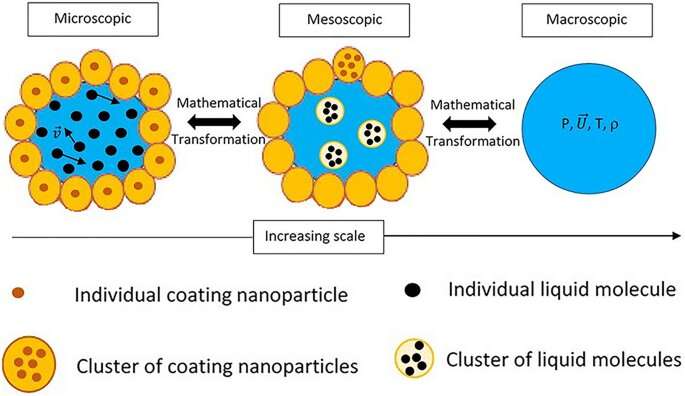'Liquid marbles' could be key to carbon capture and storage

A University of the Sunshine Coast researcher is leading a collaborative advanced computer modeling project that could make carbon capture and storage more viable and revolutionize drug delivery.
USC Lecturer in Mechanical Engineering Dr. Charith Rathnayaka and project partners from QUT, Griffith University and The University of Manchester have been assessing ways to improve the design, manufacture and operation of "liquid marbles."
These are microscopic liquid droplets that are coated with nanoparticles to form a porous shell preventing moisture reaching surrounding surfaces.
In a paper published yesterday in Archives of Computational Methods in Engineering, the team outlines how advanced computational modeling can help achieve more accurate predictions and deeper analyses of the dynamic behavior of liquid marbles, and with greater convenience.
Dr. Rathnayaka said the properties of liquid marbles included resistance to contamination, low-friction and flexible manipulation, making them appealing for applications such as gas capture, drug delivery and for miniature bio-reactors.
He said their ability to selectively interact with external gases, liquids or solids gave them great potential for CO2 capture.
"Knowledge gained through advanced computational modeling is likely to inspire new experiments and lead to new discoveries in this sub-domain of engineering," he said.
Dr. Rathnayaka said many properties of liquid marbles remained a mystery, despite recent advances in research, and computational modeling could improve understanding of their properties without requiring costly and time-intensive experimental-only procedures.
"We use computer programming to set up the models and incorporate relevant physics, mathematics and mechanics with relevant initial and boundary conditions," he said.
"Then we use supercomputing facilities to do the relevant computations and crunch the numbers leading to simulations and predictions of the behavior of liquid marbles through these computer models.
Dr. Rathnayaka said a key advantage of using liquid marbles for capturing CO2 was their scale and shape, because particles in the size range of millimeters could be installed as networks or arrays in large reactors.
He said trials by overseas researchers had shown liquid marbles reduced the material loss and increased reactivity during the multi-cycle CO2 capturing processes compared to traditional solid or liquid-only approaches.
"Magnetic liquid marbles could also have potential to deliver drugs within the human body," he said. "Because they can be opened and closed using external magnetic forces, they may be able to negotiate confined and convoluted spaces to release drugs with great accuracy in specific areas."
More information: C. M. Rathnayaka et al, Particle-Based Numerical Modelling of Liquid Marbles: Recent Advances and Future Perspectives, Archives of Computational Methods in Engineering (2021). DOI: 10.1007/s11831-021-09683-7



















